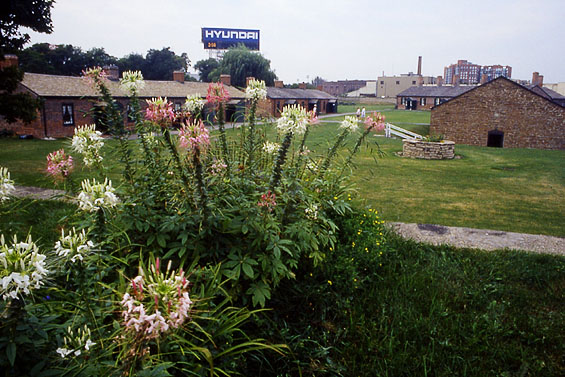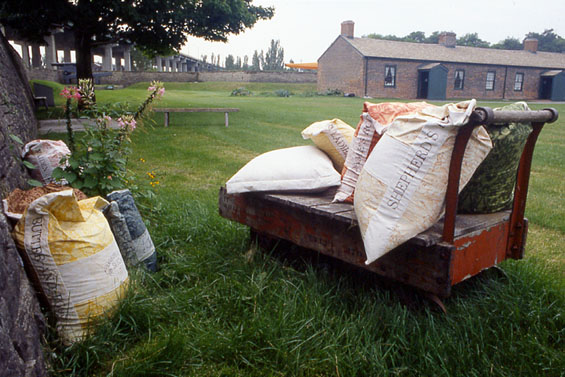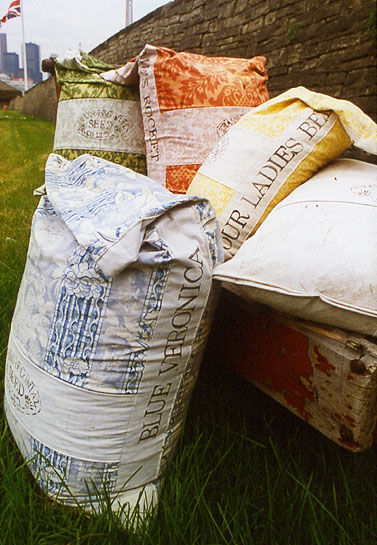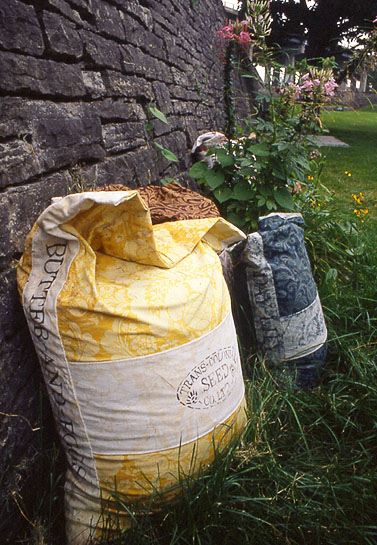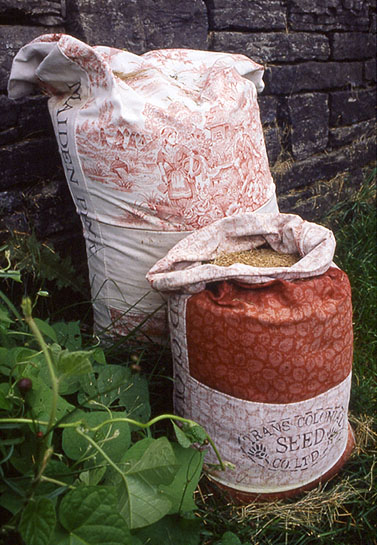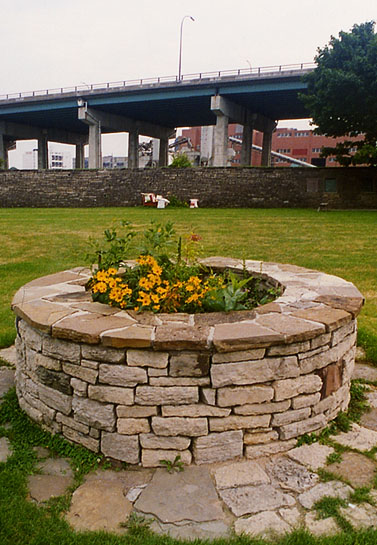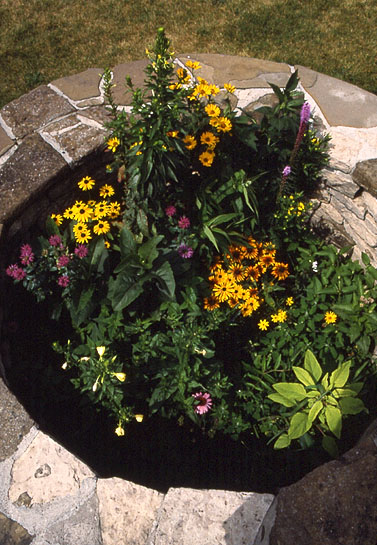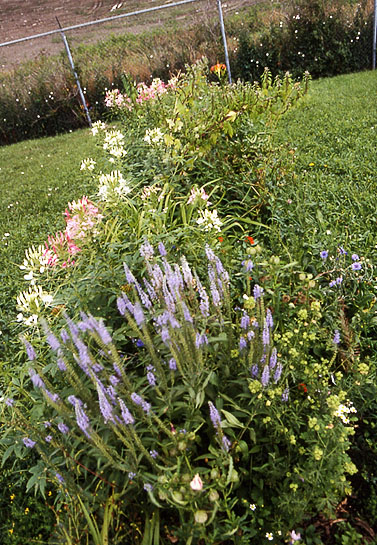Captured & Escaped, 1995
Site-specific Installation
wildflowers, fabric, cart, outdoor installation
Captured & Escaped was a site-specific work created for Fort York, a historic military base in Toronto. Drawing parallels between the history of war and the history of horticulture cultivation, it played off the distinction between “native” and “alien” wildflowers. Native wildflowers are defined as those that have naturally grown in an area, while alien wildflowers are those that “escaped” cultivation and became wild. The top of an abandoned well, located within the fort, was utilized to house the native wildflowers. The alien wildflowers were introduced in seed bags, sewn from colonial-like fabrics, and placed adjacent to the outside walls of the fort where they grew up the wall and down the outside embankment.
